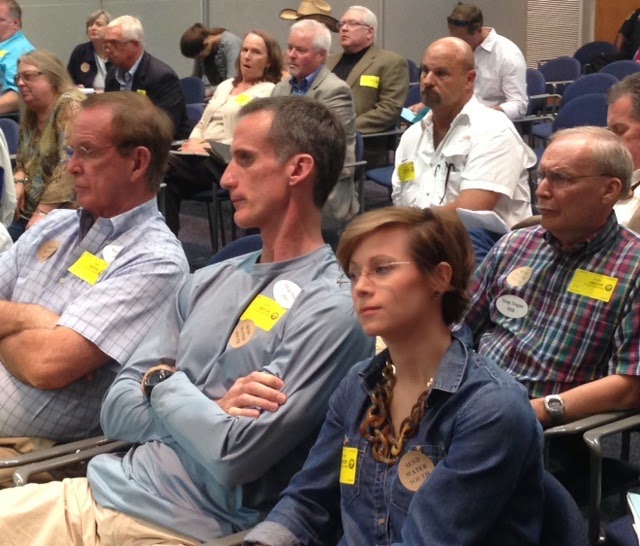Sierra Club Leads Opposition to U.S. Sugar's Plan to Build City in Everglades
Last week, Sierra Club was joined by more than two dozen coalition partners and members in speaking out against Sugar Hill at the South Florida Water Management District (SFWMD) Governing Board meeting in West Palm Beach.

Representatives from the environmental community and the public took the floor to oppose the Sugar Hill Sector Plan, which includes land use plan changes proposed by U.S. Sugar Corp. and Hilliard Brothers spanning 67 square miles in Hendry County just west of the Palm Beach County line.
It would allow up to 18,000 homes and 25 million square feet of commercial and other uses between the Everglades and its water source, Lake Okeechobee.
Sugar Hill would be the "death knell" of the Everglades, said Jonathan Ullman, of the Sierra Club. "If we want to restore the Everglades water flow ... we need to say no to this plan."
The heart of Everglades restoration effort is buying farmland that can be used for water storage and treatment areas so that more Lake Okeechobee water flows south to the Everglades.
"I think the last thing Hendry County needs is a development of homes and businesses filled with nail salons and Subway shops," said Kim Aumen, wearing a sticker that read "Send Water South."
As part of a 2010 land deal with U.S. Sugar, the district was given an option to purchase some of the land in the Sugar Hill plans. Sugar Hill would have an irreversible impact on the Everglades and coastal communities, either directly by allowing the approval of development that would preclude the creation of flowway south of the lake, or indirectly by increasing the speculative market value of the lands needed for restoration.
"It would do a ... disservice to taxpayers to let this move forward," said Lisa Interlandi of the Everglades Law Center."
Governing Board Members sought clarification from District staff on the timing of the review process and the agency's role. The Department of Economic Opportunity (DEO) has thirty days to review the plan. The SFWMD, along with other state agencies, is required to submit comments on the plan by Oct. 2.
Julia Hathaway of the Sierra Club called on the District to formally inform DEO that the plan is not in Florida's best interest. Said Hathaway, "DEO should reject the Sector Plan because of its adverse effect on the Florida Everglades and the Caloosahatchee and St. Lucie estuaries, and the flood control, water supply and economic functions they provide to nearly 8 million Floridians and millions of tourist and visitors."
Our action was covered by the Sun-Sentinel, Palm Beach Post, Miami Herald and Tampa Bay Times. Other media coverage on the Sugar Hill controversy included a Palm Beach Post editorial; a Tampa Bay Times editorial, an editorial cartoon by Jim Moran of the Miami Herald; and an article by the online newspaper Broward Bulldog (reposted by the Miami Herald) which digs into a possible connection between the King Ranch trips and U.S. Sugar's strategy for securing state approval of the Sugar Hill Sector Plan.